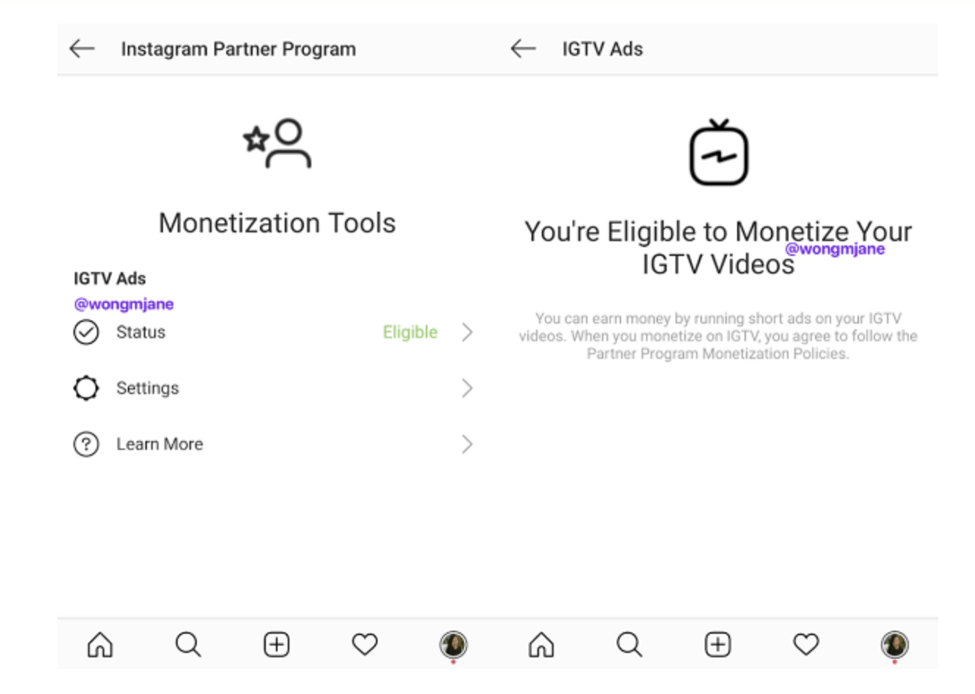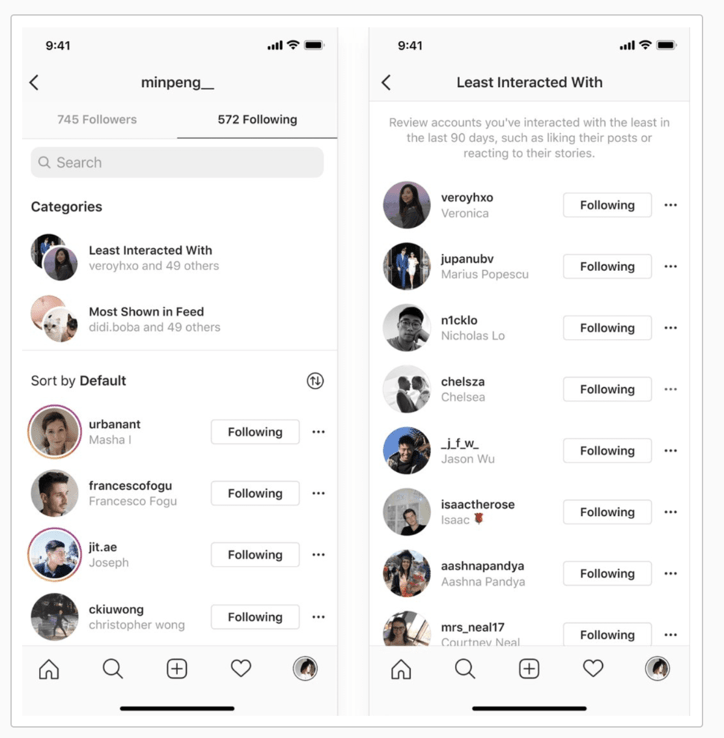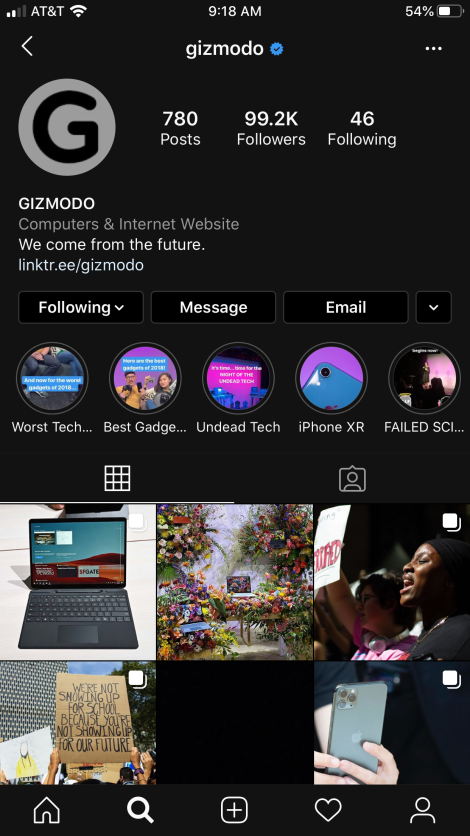It’s no secret; Instagram has taken the social world by storm. Despite frequent algorithmic updates and some challenges in IGTV adoption, the platform shows no signs of slowing down.
Its overwhelming popularity means the platform is undergoing frequent updates to its closely-guarded algorithm. Brands looking to keep up will need to be on top of all the latest tweaks and changes.
The good news is, if you read this post, you’ll get the rundown on the latest updates to the platform and how to update your content strategy in response.
2020 Marks a New Era in Social
It’s no secret that the Instagram algorithm is closely guarded. No one – outside of the Instagram elite themselves – really knows exactly how it works.
But we do have a few clues, and some careful digging revealed a few changes users should be aware of.
As it turns out, this new decade brings some major changes to social on the whole, with Instagram quickly becoming one of the most effective social media channels for business.
Despite efforts to further unify Facebook and Instagram, FB is starting to realize that relevance and authenticity are the driving forces behind Instagram’s massive popularity.
As such, many of these updates represent a solution for cutting through the noise and connecting with the audiences that matter most to you. Facebook’s “add everyone” mentality is falling out of favor.
First and foremost, due to the latest news from Facebook (business pages are about to see less organic reach and engagement, yikes), Instagram is poised to take over as one of the primary social media channels for business.
With Instagram, users can take back some control following (and unfollowing) accounts to ensure their feed is filled with carefully curated content. As Facebook’s reach continues to wane, Instagram’s will only increase. Make sure you’re ready to take full advantage of it by familiarizing yourself with the updates below.
Hint: many of them are centered around organizing your communications within the app for better engagement.
IG Rolls Out New Following Categories
While the company began testing new following categories last fall, Instagram just made them official.
Users can now see a list of all of the accounts they’ve engaged with during the past 90 days and which accounts popped up most frequently during that time, based on the platform’s combination of algorithms.
And–as you can see below, you can also review those accounts that you’ve interacted with the least.
(I break down how the IG algorithm works in this piece, in case you’re curious).
The benefit to businesses is, these new categories provide another way of measuring your relationship with your audience.
You’ll now have the ability to look at which users are interacting with your content most often–which could be helping you spot niche audiences or nail down those buyer personas.
Ultimately, the feature makes it easier to learn more about which content performs best among your target audience. It also stands to help marketers understand how conversions break down between the most vocal supporters and the loyal (or not so loyal) lurkers.
And finally, the users get an opportunity to learn more about those groups that NEVER engage with content, which can help you identify characteristics to exclude from your advertising efforts (kind of like negative keywords for social).
Age Gating
You can now control who can see your Instagram profile and content by setting up a minimum age limit for your account.
As it stands, Facebook and by extension, Instagram, have strict policies outlining who you can target with paid advertising, especially for those operating in a “restricted” sector such as tobacco, alcohol, or as of recently, vaping devices.
Historically, we’ve only been able to restrict ad campaigns to meet these requirements, with no protections for profiles or organic posts.
As of January 2020, Instagram allows business accounts to set age limits on their entire profile. The practice is known as “age-gating” and is useful for brands who wish to restrict access to their channels.

Instagram updates: age gating
To set up age gating, all you’ll need to do is follow a few simple steps:
- Go to your profile and tap the icon with three gray lines.
- Then tap Settings.
- Select Business or Creator depending on your profile type.
- Tap Minimum Age.
- Select either a default minimum age or add country-specific minimums based on local policies. The benefit here is if you’re selling something like alcohol, the legal drinking age varies by country.
Stories About You
Instagram’s ‘Stories About You’ is another new 2020 addition to the platform, designed to show users a list of all @mentions or tags from other creators.
This feature brings a new reputation monitoring component to the app’s reporting tools and is only available to users with Business or Creator accounts.
Essentially, this means that Instagram now separates Story notifications from other types of notifications, allowing users to learn more about what kinds of IG Stories drive engagement–and beyond that, who is engaging.
Any mention from the past 24 hours will now be aggregated into an “About You” list, found at the top of the Activity tab.
The benefit here is, it’s easier for brands to respond to their audience, share valuable UGC posts, and keep on top of any complaints or criticisms before they do real damage.
Profile Display Flexibility
Historically, Instagram profiles followed a single formatting style that included a business category and contact information, there to help your audience understand what your brand was all about and how to get in touch.
You can edit your Business information by walking through the following steps:
- Log in to your account.
- Tap “Edit Profile.”
- From there, you’ll be presented with a few options for editing your Public Business Information. This includes your category, the Page linked to your Instagram account, and your contact information.
- In addition to editing that information, you can also decide whether you want it to display at all. Head over to “Profile Display,” found under Public Business Information to change whether your contact details are hidden or visible.
- When you’re satisfied with your profile, tap “Done” to save and return to your profile.
Notice how, in the example below, Wedding Wire promotes their app (and the tools inside) and offers the option to message or email the company should someone wish to get in touch.
In this case, it may not make sense to offer a physical address or phone number, if the company conducts most of its business via email or social.

Instagram profile: WeddingWire
Inbox Organization
Further proving that 2020 Insta is all about organization, the platform takes a cue from Gmail and now sorts your messages into two different tabs: “Primary” and “General.”
Here’s a quick rundown of the differences between the two:
- Primary: The primary folder is where you’ll keep those messages that are most important. Initially, all messages will show up in the Primary tab, but you can send them to the General tab, manually to indicate your personal priorities. Instagram automatically sends notifications for unread Primary messages, but you can turn them off from the Settings tab if it gets to be too much.
- General: Messages in the General tab represent those deemed less important by the platform. In this case, notifications are off by default, though you can activate them in your Settings tab if you’d like.
This feature also allows you to manage incoming requests based on priority. Requests are DMs from accounts that you don’t follow (you know, like a “friend request”).
You’ll now be able to accept and deny requests from your inbox and have the option to prevent messages from being marked “seen” until you’ve accepted them.
Additionally, users can view requests based on “important” accounts. Do this by tapping All Requests, and select Top Requests to see if any high profile accounts have reached out.
New Video Trimming Feature
Okay, this one is still in the testing phase, but slated for a 2020 rollout nonetheless.
Discovered by reverse-engineer Jane Manchun Wong this past February, Instagram appears to be working on a new tool that allows users to edit and trim Stories from inside the app. The tool uses a video slider, much like those found inside other iOS or Android editing tools.

Instagram’s video trimming feature
The feature offers a small convenience to creators, allowing for editing from inside the native app, as opposed to a third-party or desktop editor.
I could see this being useful for time-strapped businesses, as it would allow them to seamlessly create and post Stories on-the-go.
That said, a desktop editor or third-party app will likely offer more features and maybe a better bet for most posts.
IGTV Moving Toward Monetization
Instagram launched IGTV over a year and a half ago and many experts haven’t been shy about declaring the long-form video feature dead.
While it’s true that IGTV has struggled from the jump, Instagram is hoping recent updates can bring some new life to the feature. Users can now access IGTV content from the Instagram Explore tab, share via Stories, and now, even watch previews from their main feed.
Though Facebook initially introduced IGTV as an exclusive, long-form video channel, marketers are increasingly seeing the value of repurposing existing Facebook and YouTube videos on IGTV.
(Sidebar: If you’d like to learn more about how to do this yourself, I offer up six easy ways to reformat for IGTV here.)
As the platform gains more traction, Instagram needs to make IGTV a friendlier place for the creators that bring in valuable traffic. The platform is currently working on a monetization program that aims to benefit creators who admitted to the partner program.
Again, this screenshot comes from Jane Manchun Wong who discovered Instagram was testing new monetization tools.

Instagram’s IGTV advertising
Like Google’s Display Network or Facebook’s Audience Network, IGTV creators will have the ability to opt in to displaying ads alongside their IGTV videos, presenting a new opportunity to earn revenue from the platform.
Instagram DMs Could Soon Have a New Look
It’s not official yet, but Instagram’s DMs appear to be experimenting with a new look.
After a lifetime of gray messages, the platform subtly changed some users’ message bubbles to a purple that fades to blue, while others are still DMing in the classic gray.
While this update doesn’t necessarily mean a whole lot to marketers, it does mark a shift, bringing Instagram more in line with Facebook Messenger–signaling the next stage in the platform’s unified inbox push.
In these next few sections, I’ll go over some of the biggest Instagram updates of 2018 and 2019.
Instagram Updates: 2019
Instagram Removing the Following Tab
In a move that comes as a relief to many, Instagram announced that it would be removing its Following tab.
Frequently referred to as the “stalker” tab, this section of Instagram was previously listed under the Activity section (the Heart icon in the bottom menu) and allowed users to see the Instagram activity of those they were Following, including Likes and comments.

The now defunct Instagram Follower tab
While the initial purpose behind the tab was to let users find relevant hashtags and accounts to follow based on what their friends were interacting with, Instagram stated the Explore tab is now the go-to for finding new content to follow. Instagram also cited a lack of use as one of the primary factors for killing the feature.
Now, users will only see their own activity when they click the Heart icon.
Instagram Rolls Out Dark Mode
Another sought-after feature was recently unveiled by Instagram: dark mode.
Dark mode is meant to help users avoid the strain that comes with constant blue light, as well as save battery on devices.
Using dark mode on Instagram is incredibly easy; just update your mobile device to the latest software available. When users switch to dark mode on their device, Instagram will automatically do the same.
Instagram Algorithm Favors Realistic Content?
In a channel ruled by photos, it’s not exactly a surprise that many of the images popping up on Instagram are heavily edited, enhanced, or otherwise altered and “unrealistic.”
These days, users are getting a bit fed up with the unrealistic standards often presented. And thanks to the rise of Stories and Live videos, more people are posting authentic, real-life snapshots.
And the Instagram audience loves it.
Because of that, many have speculated that the Instagram algorithm had shifted to favor images deemed more “realistic.”
Instagram commented, saying that the algorithm does not, in fact, favor realistic images. Rather, it chooses to favor images depending on those that individual users have interacted with in the past.
If users engage more with more “realistic” content, they’ll see more of it in their feed. Otherwise, it’s business as usual.
Instagram Updates: 2018
New Update On Instagram – Take it to the Top
This one isn’t exactly new, but it’s crucial to understanding the Instagram algorithm.
Like any other search engine or feed, you want your posts positioned firmly at the top of user’s feeds.
And while Instagram used to simply show posts chronological order, that all changed a few years ago.
Now, posts with higher engagement will (likes, comments, shares, etc.) will rank higher in Instagram feeds.
The number of interactions signal to the Instagram algorithm that “hey, this must be a quality post – people are loving it!” and the algorithm promotes it accordingly.
Now though, your posts may be getting less exposure than ever – in fact, it may only be exposed to 10% of your following.
The good news is that as your post gains traction and engagement, that percentage will increase. So make sure you’re tagging and using hashtags and CTAs in your post for as much engagement as possible.
More good news: it’s not strictly a popularity contest, according to an Instagram spokesperson. A post with less engagement can still appear at the top of a user’s feed if its relevant to them.
Dealing With New Update On Instagram – Follow Hashtags
At the end of last year, Instagram announced that users now have the ability to follow hashtags.
They no longer have to search for hashtags they’re interested in; they can simply follow them as they would an account. Top posts using that hashtag will then begin to show up in their regular newsfeed.

New Update On Instagram
This is big news for brands. Better hashtag research will mean the likelihood that your posts will continuously show up in your target audience’s news feeds.
Better yet, you can encourage your audience to follow your own hashtag.
In other hashtag news, rumor has it that
Proceed With Caution When Using Pods
You know the new Instagram “pods”?
Pods are groups of people who are willing to help each other out by engaging on each other’s posts through likes, comments, shares, etc. And as we covered before, more engagement = more views of your post.
This all sounds well and good, right?
Well, Instagram may not think so. In fact, Instagram seems to have no love for pods, and could go so far as to shadowban users who use pods.
A shadow ban is like being blacklisted by Instagram’s algorithm: your rank in the algorithm will be significantly decreased, making it very difficult for your content to find its way to user’s feeds.
New Update On Instagram
The problem is that the engagement generated through pods isn’t purely organic, and only makes it look like you have a lot of really engaged followers.
That won’t sit well with the algorithm, so if you do use pods, do so sparingly.
Recommended Posts As New Update On Instagram
As of now, Instagram users only see posts by people they follow in their feeds, as well as a few Sponsored content posts.
But that’s about to change. Instagram’s starting to roll out posts that are recommended for you.

New Update On Instagram
This will work similar to Instagram’s Explore page, which is specially curated based on what Instagram thinks you might like.
This will likely be content that your friends have liked or what they think you will like based on who you follow or what content you engage with.
For example, if you follow a lot of foodie blogs, you’ll be seeing a lot more food content in your feed.
You can, however, temporarily hide recommended posts. Simply tap the 3-dot icon above the post and select Hide.
Instagram Now Shows When You’re Active
Following suit of popular apps like Facebook Messenger and WhatsApp, Instagram now allows you to see when people you were chatting with were using the app.
Located on the direct messages screen, Instagram will tell you when the friend you’ve been messaging with was last active.
This feature was not officially announced by Instagram and is automatically enabled for all users.

New Update On Instagram
But if you feel it’s a little too much information to share with friends, you can choose to disable the feature.
Located in Instagram’s settings, the “Show Activity Status” will be enabled by default, but you can toggle it off. Note that if you do choose to disable the function, you won’t be able to see anyone else’s activity information.
Again, not all followers will be privy to this information. It’s available only to people you follow or have direct messaged in the past.
What’s Next for Instagram in 2020 and Beyond?
Moving forward, businesses have both big opportunities and a few potential roadblocks (it’s even harder to gain exposure in newsfeeds) when it comes to their Instagram strategy.
As we get closer to mid-2020, we’ll likely see more Instagram improvements including improved insights, greater transparency, and more ways to connect with audiences through Stories.
I also wouldn’t be surprised that if sometime later in the year, Instagram introduces new Shopping features and ad formats. As it stands, though, we’ll just have to wait and see.



